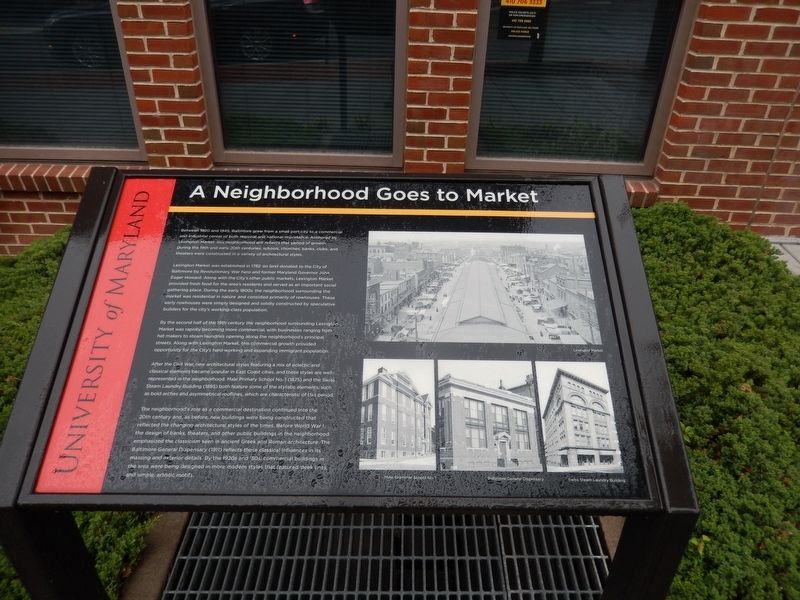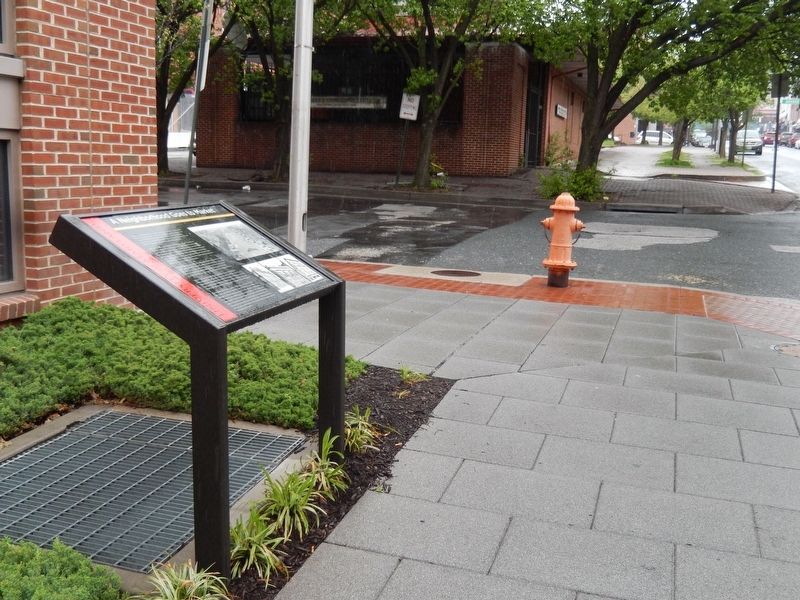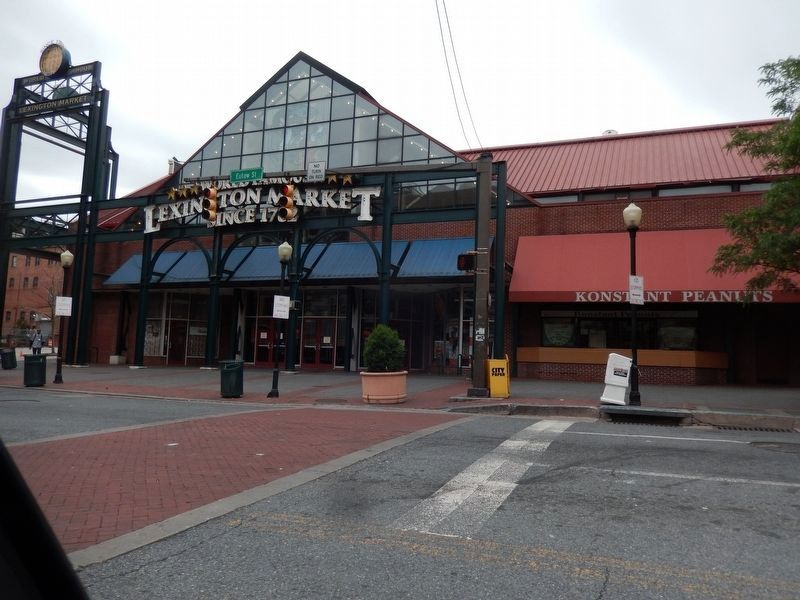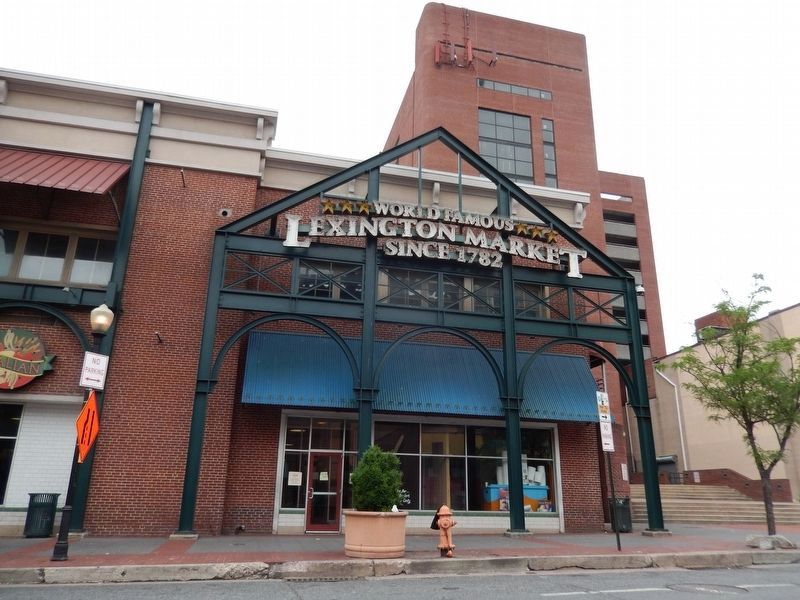A Neighborhood Goes to Market
Lexington Market
Between 1820 and 1945, Baltimore grew from a small port city to a commercial and industrial center of both regional and national importance. Anchored by Lexington Marker this neighborhood still reflects that period of growth. During the 19th and 20th centuries, schools, churches, banks, clubs, and theaters were constructed in a variety of architectural styles.
Lexington Market was established in 1782 on land donated to the City of Baltimore by Revolutionary War hero and former Maryland Governor John Eager Howard. Along with the City’s other public markets, Lexington Market provided fresh food for the area’s residents and served as an important social gathering place. During the early 1800s the neighborhood surrounding the market was residential in nature and consisted primarily of rowhouses. These early rowhouses were simply designed and solidly constructed by speculative builders for the city’s working-class population.
By the second half of the 19th century the neighborhood surrounding Lexington Market was rapidly becoming more commercial, with businesses ranging from hat makers to steam laundries opening along the neighborhood’s principal streets. Along with Lexington Market, this commercial growth provided opportunity for the City’s hard-working and expanding immigrant population.
After the Civil War, new architectural
styles featuring a mix of eclectic and classical elements became popular in East Coast cities, and these styles are well represented in the neighborhood. Male Primary School No. 1 (1875) and the Swiss Steam Laundry Building (1895) both feature some of the stylistic elements, such as bold arches and asymmetrical rooflines, which are characteristic of this period.The neighborhood’s role as a commercial destination continued into the 20th century and, as before, new buildings were being constructed that reflected the changing architectural styles of the times. Before World War I, the design of banks, theaters, and other public buildings in the neighborhood emphasized the classicism seen in ancient Greek and Roman architecture. The Baltimore General Dispensary (1911) reflects these classical influences in its massing and exterior details. By the 1920s and ‘30s, commercial buildings in the area were being designed in more modern styles that featured sleek lines, and simple, artistic motifs.
(Inscriptions under the images on the right)
Lexington Market, Male Grammar School No. 1, Baltimore General Dispensary, and Swiss Steam Laundry Building
Erected by University of Maryland.
Topics. This historical marker is listed in these topic lists: Architecture • Industry & Commerce. A significant historical year for this entry is 1820.
Location.
Other nearby markers. At least 8 other markers are within walking distance of this marker. Building Atop the Burying Ground (about 500 feet away, measured in a direct line); Among the Illustrious Men (about 600 feet away); Final Rest (about 600 feet away); Poe’s Baltimore (about 600 feet away); A La Memorie D’Edgar Allan Poe (about 600 feet away); A Monument to the Memory of Edgar Allan Poe (about 600 feet away); Westminster Church and Cemetery (about 600 feet away); Westminster Hall & Burying Ground: Where Baltimore's History Rests in Peace (about 600 feet away). Touch for a list and map of all markers in Baltimore.
Credits. This page was last revised on February 20, 2021. It was originally submitted on May 6, 2017, by Don Morfe of Baltimore, Maryland. This page has been viewed 210 times since then and 9 times this year. Photos: 1, 2. submitted on May 6, 2017, by Don Morfe of Baltimore, Maryland. 3, 4. submitted on May 27, 2017, by Don Morfe of Baltimore, Maryland. • Bill Pfingsten was the editor who published this page.



